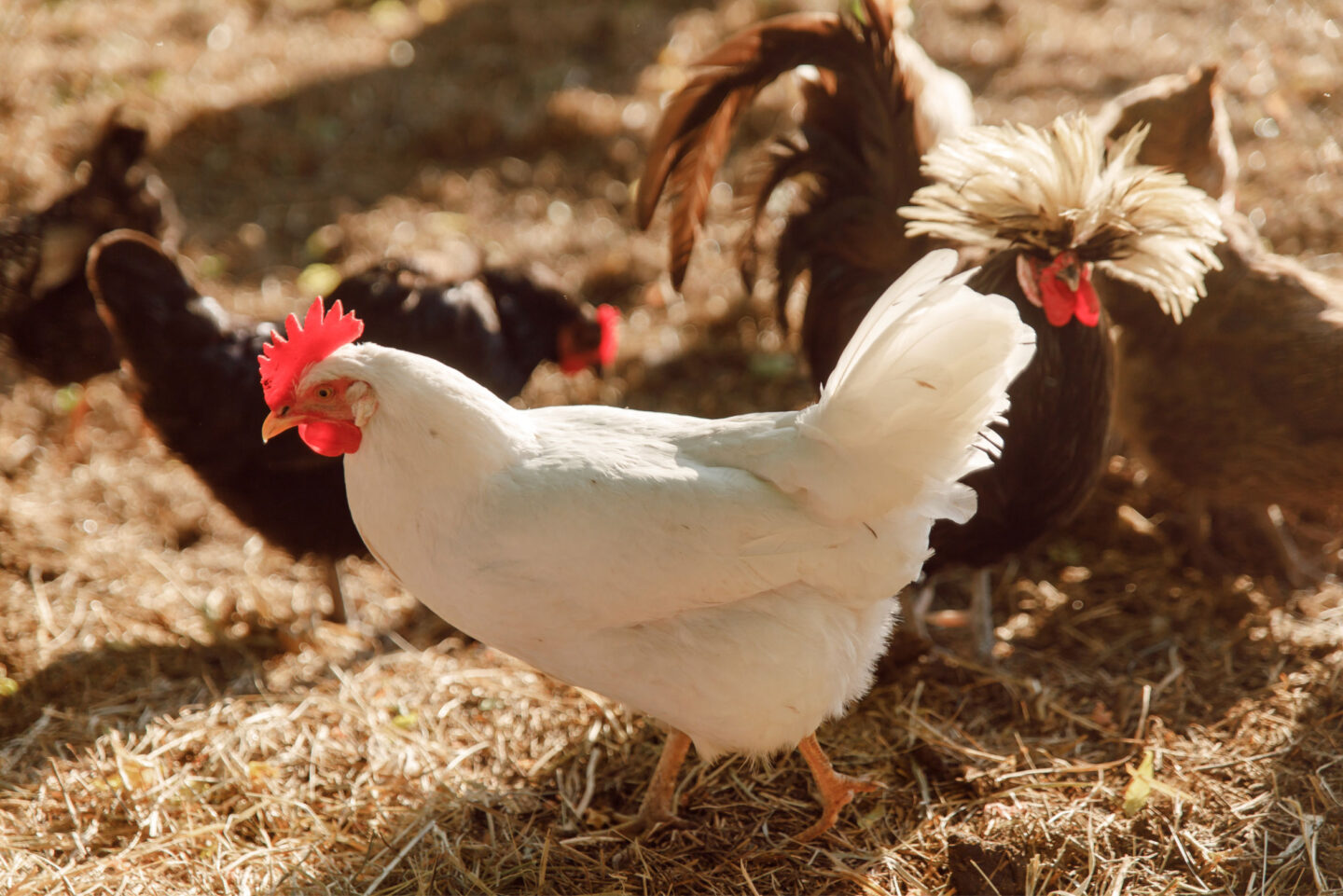How To Raise Chickens: Raising Chicks in Two Phases

Phase I: The Brooder
Young chicks must have a brooder for warmth and protection. Watch the video below to learn exactly what a brooder is and how to set one up.
How To Setup Your Brooder
- Prepare the brooder by cleaning and disinfecting it before the chicks arrive.
- Once it has dried, cover the floor with 4 to 6 inches of dry litter material.
- Pinewood shavings or sawdust is recommended to aid in disease prevention.
- Place the brooder in a draft-free location.
- Carefully position an incandescent bulb about a foot above the box floor to provide heat and add a second light in case one bulb burns out.
Monitoring Chicks in the Brooder
Newly hatched chicks will find their perfect temperature in the brooder. If it’s too hot under the bulb chicks will move away from the heat; if too cool they’ll move closer.
Give chicks space to move about. Baby chicks huddle together when they’re cold, which can cause smothering or suffocation, so check your chicks regularly to be sure they are comfortable.
Raise the height of the lights as they grow, because their need for artificial heat will diminish as they grow feathers.
Water and Food For Your Chicks
Clean, fresh water is the most important thing to give your chicks. Make sure it is always available and that the waterers are clean.
Chick starter grower rations are available in medicated chick feed and un-medicated chick feed formulas.
Select one with 18% protein that has the vitamins and minerals chicks need to flourish.
It is important for the right blend of nutrients to be age specific, as this feed lays the groundwork for the birds entire future.
Phase II: The Coop
Within a few weeks, your chicks will soon be big enough to move into their coop. As they grow it will become obvious that your brooder won’t hold them forever and forming a plan around how and when to introduce them to the coop or outdoors is a great idea.
Moving from baby brooder to adult coop.
Chicks should be mostly feathered – At 5 to 6 weeks your fluffy chicks will start to resemble adult birds by growing out pinfeathers.These adult feathers will help them regulate their body temps better than fluffy chick down.
Chicks should be acclimated – Although they start off at 90 – 95 degrees in the brooder the first week of life, you need to decrease this temperature each week until the temperature inside the brooder is close to what daytime temps will be.For the first few weeks (and especially if outdoor temperatures are fluctuating), you may want to bring the birds back into the brooder at night or in bad weather.
Chicks should be integrated – Nobody wants hen-house drama, and taking a few simple steps to introduce new birds to old will save a great deal of time and potential injuries.
These steps include having a “get acquainted” phase when the new and old birds are in separate, but attached areas so they can interact without aggressiveness. You also want to do the coop consolidation at night so that the old and new flock wake up together to help minimize bullying.
At this point it is also important to remember if you have youngsters joining your existing flock to only feed chick starter to all birds until the youngest bird is 16 weeks. The extra calcium in regular layer feed can harm young chicks.
Chicks should be eating treats and grit – It’s a great idea to get your birds used to eating treats (if you plan to offer them) a few days prior to putting them outside. That way, you can use the treats in case you need to lure the birds into a secure space at night. Until they are used to thinking of the coop as “home base” they may need just a bit of encouragement.
Just remember, if you start feeding treats (offer no more than 10-15% of the total diet) you also need to offer a grit free choice to aid in digestion.
